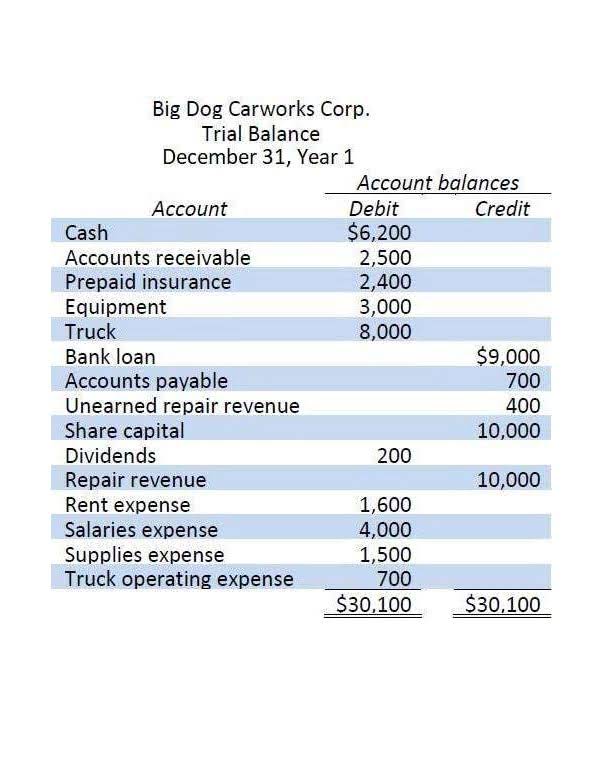Are Retained Earnings an Asset or Part of Equity?

Retained earnings (RE) is the cumulative net income that has not been paid out as dividends but instead has been reinvested in the business. For example, businesses can use these earnings to reinvest into the company for expansion through the purchase of property, plant and equipment Bookkeeping for Veterinarians or to pay off its debts. When a corporation withdraws money from retained earnings to give to shareholders, it is called paying dividends.
Management and Keeping Profits

These accumulated profits are a component of owner’s equity on a company’s balance sheet, and they are neither an asset nor a liability. They signify a source of internal financing, reflecting cumulative profitability belonging to the company’s owners. This account shows how much earnings have been reinvested rather than paid out.
Are retained earnings owners equity?
- Retained earnings represent the cumulative net income a company has earned and retained over time after paying out dividends.
- A unique type of Expense account, Depreciation Expense, is used when purchasing Fixed Assets.
- The total amount of all assets will always equal the sum of liabilities and shareholders’ equity.
- The income statement reports the revenues, gains, expenses, losses, net income and other totals for the period of time shown in the heading of the statement.
- The actual cash or assets generated are reflected on the asset side of the balance sheet, such as increased cash balances or new property, plant, and equipment.
- Our team is ready to learn about your business and guide you to the right solution.
- This financial reserve is a powerful engine, fueling future growth, expansion, and investment opportunities.
Equity, also known as owner’s equity or shareholders’ equity, represents the owners’ residual claim on the company’s assets after all liabilities have been satisfied. The primary components of equity include contributed capital and retained earnings. Contributed capital refers to the funds invested directly by shareholders in exchange for ownership shares, often through common stock. Retained earnings represent the cumulative net income that a company has reinvested into the business, rather than paying it out as dividends.

What Is Retained Earnings on Balance Sheet?
A company that is consistently able to maintain profitable operations will generally see its figure grow over the years. Negative retained earnings are what occurs when the total net earnings minus the cumulative dividends create a negative balance in the retained earnings balance account. … Negative retained earnings often show that a company is experiencing long-ter losses and can be an indicator of bankruptcy. Retained earnings can be used to pay additional dividends, finance business growth, invest in a new product line, or even pay back a loan. Most companies with a healthy retained earnings balance will try to strike the right combination of making shareholders happy while also financing business growth. Current liabilities are usually paid with current assets; i.e. the money in the company’s checking account.
Example of Retained Earnings Formula
Since it doesn’t subtract the cost of goods sold, revenue is a good measurement of the demand for a business’s offerings. Companies in a growth phase tend to reinvest more of their surplus into the business, whereas a mature company may opt to pay more dividends when it has a surplus. Calculating retained earnings after a stock dividend involves a few extra steps to figure out the actual amount of dividends you’ll be distributing. Proper accounting of retained earnings requires adherence to generally accepted http://asc81000.free.fr/?p=1568 accounting principles (GAAP) or international financial reporting standards (IFRS), depending on the jurisdiction. Research and development (R&D) efforts can also be funded from retained earnings. Investing in new product development or process improvements is essential for innovation and competitive advantage.
The Accounting Equation and Its Relevance
Retained earnings are the cumulative net income a company has accumulated and not distributed as dividends. This portion of profits is kept within the company for reinvestment or future use. Funds may be used for working capital, acquiring fixed assets, or reducing debt.
- As with our savings account, we’d take our account balance for the period, add in salary and wages, and subtract bills paid.
- Revenues consist of income generated from a company’s primary operations, such as sales of goods or services.
- This number is the sum of total earnings that weren’t paid to shareholders as dividends.
- Retained earnings also have an indirect but important impact on a company’s valuation.
- Negative earnings are relatively common with new businesses but can be a sign of financial trouble with more established companies and can also result from high dividend distribution.
Are Retained Earnings an Asset or Part of Equity?

Retained earnings are a fundamental concept in financial accounting, representing the cumulative profits a company has earned and kept within the business over time. Instead of distributing all profits to shareholders as dividends, a company may choose to retain a portion to reinvest in its operations, pay down retained earnings asset or liabilities debt, or fund future growth. This figure is a key component of owner’s equity on the balance sheet, providing insight into a company’s financial health and its capacity for self-funded expansion. Analyzing retained earnings can reveal a company’s strategic decisions regarding profit utilization and its long-term financial stability. Assets are economic resources controlled by the company that are expected to provide future economic benefits, such as cash, inventory, property, and equipment. Liabilities represent what the company owes to external parties, including loans and accounts payable.
Additional Paid-In Capital

This reinvestment supports the company’s long-term stability and ability to generate future profits. A consistent increase in retained earnings over time indicates a financially sound business effectively managing and reinvesting its profits for sustainable development. Typically, financial statements include a statement of retained earnings that sums up how this account has changed in the current period. Conversely, dividends and net losses (when expenses exceed revenue) reduce retained earnings. Many wonder whether retained earnings represent an asset or a component of equity on a company’s financial statements. This confusion stems from a misunderstanding of how profits are accounted for and utilized.
► Equity
- Paying off high-interest debt also may be preferred by both management and shareholders, instead of dividend payments.
- Now let’s draw our attention to the three types of Equity accounts, discussed below, that will meet the needs of many small businesses.
- Examples of current assets include accounts receivable and prepaid expenses.
- Please be aware that this might heavily reduce the functionality and appearance of our site.
- Since retained earnings add to equity, an increase in retained earnings can reduce the debt-to-equity ratio, indicating a stronger equity base relative to debt.
- We do not manage client funds or hold custody of assets, we help users connect with relevant financial advisors.
- While retained earnings represent a source of funds, they are not a specific bank account holding cash.
But, instead of withdrawing the funds, they’re retaining the money to reinvest in the business or save to pay future dividends. The calculation begins with the retained earnings balance from the end of the previous accounting period. This “beginning retained earnings” figure represents the cumulative retained profits up to that point. Your company’s balance sheet may include a shareholders’ equity section.
Cash Flow Statement Template
Conversely, when a company pays dividends to its shareholders, retained earnings decrease, which in turn reduces total equity. Both of these actions maintain the balance of the accounting equation, as the changes are reflected within the equity component. Understanding the accounting equation solidifies that retained earnings are a vital part of owner’s equity, reflecting assets financed by reinvested profits. Equity, also known as shareholder’s equity, represents the owners’ residual claim on the company’s assets after all liabilities have been satisfied. The balance sheet is the primary financial statement where these three components are presented, providing a snapshot of a company’s financial position.
